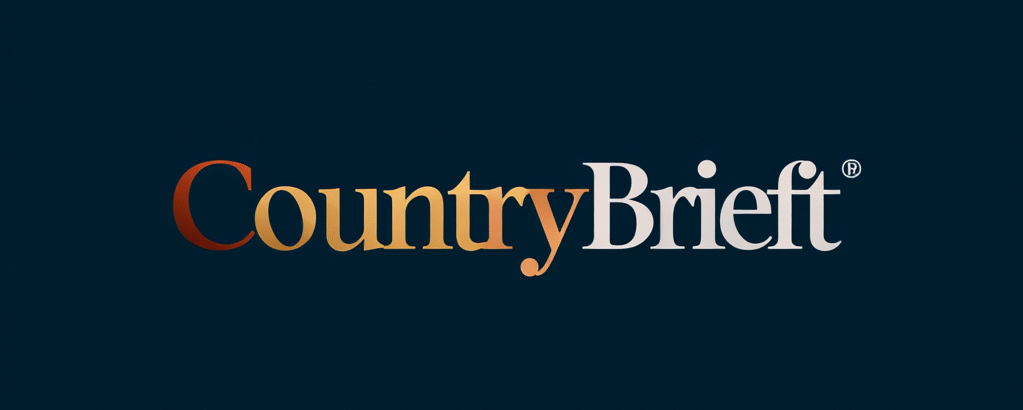How Government Agencies Can Evaluate CPaaS Solutions

Government agencies are increasingly looking at how to connect better with people. This is where CPaaS for Government comes in. It’s a way to add communication features, like text messages or calls, into the systems agencies already use. But with so many options out there, how do you pick the right one? It’s not as simple as just picking the first name you see. You need to think about what your agency really needs, what the companies are promising, and if they can actually deliver. This guide will help you sort through it all.
Key Takeaways
- Figure out exactly what your agency needs to do with communication. What problems are you trying to solve? List out all the ways you want to use CPaaS, from simple things like sending alerts to more complex interactions.
- Look at what the CPaaS companies are saying they can do. Do they understand the government’s specific needs? Do they have a plan for the future that makes sense for public sector work?
- Check if the company is stable and can handle your needs, especially if you operate in different areas. A company that’s doing well financially and has partners in place is usually a safer bet.
- Understand the costs involved. Make sure the pricing is clear and makes sense for how much you’ll actually use the service. Avoid surprises in your bill.
- See how they support their customers. Good customer service and clear agreements, like Service Level Agreements (SLAs), are important. You also want to think about how the people receiving your messages will experience it.
Understanding Your Agency’s Communication Needs

Before you even start looking at different CPaaS providers, the most important thing is to really get a handle on what your agency actually needs. It sounds obvious, right? But you’d be surprised how many jump into vendor comparisons without a clear picture of their own communication goals. This is especially true when thinking about public sector communication platforms or cloud communication for public agencies.
Identify Specific Use Cases
First off, what exactly do you want to achieve with a new communication platform? Think about the specific tasks or services you need to provide. Are you looking to send out public safety alerts, manage citizen inquiries, facilitate internal team collaboration, or something else entirely? Listing these out is key. You might have a primary use case, like sending out urgent notifications, but also secondary ones, such as collecting feedback or scheduling appointments. It’s a good idea to write these down and rank them by importance. This helps you focus on what truly matters.
- Emergency alerts and public safety announcements.
- Citizen service hotlines and inquiry management.
- Internal staff communication and coordination.
- Appointment reminders and scheduling.
- Feedback collection and surveys.
Define Hard and Soft Requirements
Once you have your use cases, you need to figure out what you absolutely must have and what would be nice to have. Hard requirements are non-negotiable. These could be things like specific security protocols for secure messaging for government operations, compliance with certain regulations, or the ability to handle a massive volume of messages during an emergency. Soft requirements are more about convenience or preference, like a user-friendly interface or advanced analytics that aren’t strictly necessary but would be beneficial. Clearly separating these will save you a lot of time and potential headaches down the line.
Here’s a quick way to think about it:
| Requirement Type | Example for Public Agency |
|---|---|
| Hard | HIPAA compliance for health notifications |
| Hard | Ability to send 1 million SMS in under 10 minutes |
| Hard | Data hosted within the EU a sovereign Communications Platform as a Service (CPaaS) cloud solution designed for digital government |
| Soft | Real-time chat support for agents |
| Soft | Customizable reporting dashboards |
Prioritize Communication Objectives
Finally, what are the main goals you’re trying to hit with your communication strategy? Is it about improving citizen engagement, increasing operational efficiency, reducing response times, or ensuring public safety? Your objectives should guide your choice of CPaaS solution. For instance, if your primary objective is to improve citizen engagement, you’ll want a platform that supports multiple channels and offers easy ways for citizens to respond. If it’s about efficiency, you might focus more on automation and integration capabilities. It’s about making sure the technology you choose actually helps you meet your agency’s mission.
Understanding your agency’s specific communication needs is the bedrock of selecting the right CPaaS solution. Without this clarity, you risk choosing a platform that doesn’t fit, leading to wasted resources and unmet goals. Take the time to map out your use cases, define your must-haves versus nice-to-haves, and pinpoint your core communication objectives.
Evaluating Vendor Market Understanding and Vision
When you’re looking at CPaaS solutions for your government agency, it’s not just about what they can do, but how well they understand the landscape you’re operating in. This means checking if they really get what makes government communications tick and where the whole CPaaS thing is headed. It’s about finding a partner who sees the bigger picture, not just the next sale.
Assess Market Dynamics Comprehension
Does the vendor actually know what’s going on in the CPaaS world, especially as it applies to public sector needs? They should be able to talk about how things are changing, what new channels are popping up, and how technology is shifting. It’s important that they understand that government agencies have unique requirements, different from private businesses. A vendor that can clearly articulate how they adapt to these evolving needs and regulatory environments shows they’re paying attention. Look at their client list; do they have experience with similar public sector organizations? This isn’t just about having a generic understanding; it’s about a specific grasp of the challenges and opportunities government faces. You want a provider who isn’t just reacting but anticipating.
Analyze Alignment with Customer Needs
It’s one thing to understand the market, but another to translate that into actual products and services that help your agency. How do they take their market knowledge and turn it into solutions? Do their current offerings match what you’ve identified as your needs? Think about flexibility – can their platform adapt to specific use cases or future requirements that might not be obvious today? For example, if your agency needs to send out emergency alerts, does the vendor have a robust system for that, or is it just an add-on? Evaluating this alignment is key to ensuring you’re not buying a solution that’s a poor fit.
Review Product and Offering Strategy
This is where you look at their roadmap. What’s their plan for developing their platform and services? Does it make sense given market trends and your agency’s potential future needs? Are they innovating, or just sticking with what they have? A good CPaaS provider will have a clear strategy for differentiating their services and adding new features that provide real value. This includes being agile enough to respond to new regulations or technological advancements. You want to see a plan that shows they’re thinking ahead, not just about today’s problems but tomorrow’s opportunities. This is a good place to start looking at leading CPaaS vendors if you haven’t already.
A vendor’s vision isn’t just about having cool tech; it’s about demonstrating a clear path forward that aligns with the practical realities and future goals of their clients. For government agencies, this means a vision that accounts for security, compliance, and broad public reach.
Assessing Vendor Viability and Global Reach
When you’re looking at CPaaS providers, it’s not just about what they can do today, but also if they’ll be around and capable tomorrow. Think about it like this: you wouldn’t want to invest heavily in a new system, say for something like drone procurement, only to find out the vendor is struggling financially. That’s where assessing their viability comes in. We need to make sure they’re stable and have the resources to keep improving their services.
Examine Financial Health and Investment
This is pretty straightforward. You want to see if the company is making money and if they’re putting that money back into the business. Are they growing? Are they profitable? A company that’s not investing in research and development might seem fine now, but they could fall behind quickly as new technologies pop up. It’s about looking at their revenue, their profits, and how much they spend on making their product better. A vendor that’s consistently investing in R&D is more likely to adapt to future communication needs.
Evaluate Global Presence and Partnerships
Government agencies often operate across different regions, sometimes internationally. So, does the CPaaS provider have a solid presence where you need them? This isn’t just about having an office somewhere; it’s about understanding their network. Can they reliably send messages to recipients in all the countries you serve? Are they following local laws and regulations in those places? This is super important for things like international alerts or coordinating with global partners. They should also have a good handle on local communication channels, like Zalo in Vietnam, not just the big global ones.
Consider Vendor’s Long-Term Strategy
Where is this company headed? Do they have a clear plan for the future? This ties into their market understanding and product strategy. Are they keeping up with trends in government digital transformation tools? Are they thinking about how their platform can support new use cases down the line? You want a partner who is looking ahead, not just trying to keep up. It’s about finding a vendor whose vision aligns with your agency’s long-term goals for communication and technology adoption.
Analyzing Pricing Models and Transparency
When you’re looking at Communication Platform as a Service (CPaaS) options, the money part is obviously a big deal. It’s not just about the sticker price, though. You really need to dig into how vendors charge and if they’re upfront about it. A CPaaS solution that seems cheap at first glance could end up costing way more if the pricing isn’t clear or doesn’t fit how your agency actually uses it. Understanding the total cost of ownership is key to making a smart choice.
Compare Pricing Structures
CPaaS vendors have different ways of charging. Some might charge per message, others per minute for voice calls, and some have a base platform fee. You’ll also see options that bundle services or offer tiered pricing based on volume. It’s important to see which model makes the most sense for your agency’s expected usage. For example, if you anticipate sending a lot of SMS messages but fewer voice calls, a per-message model might be better than a blended rate.
Here’s a look at common pricing components:
- Message Fees: Charged for each SMS, MMS, or other message sent or received.
- Voice Minutes: Priced per minute for inbound and outbound calls.
- Number Rental: Fees for dedicated phone numbers or short codes.
- Platform Fees: Some vendors charge a recurring fee for access to the platform and its features.
- Feature Add-ons: Extra costs for advanced features like AI capabilities, specific integrations, or enhanced analytics.
Ensure Transparent Costing
This is where things can get tricky. A vendor might advertise a low per-message rate, but then surprise you with hidden fees for things like number provisioning, message delivery reports, or even support. You need to ask direct questions and get everything in writing. What exactly is included in the base price? Are there extra charges for different message types or delivery statuses? Look for vendors who provide clear, itemized billing that breaks down every cost.
It’s also wise to ask about potential price increases over time. Will your rates be locked in for a certain period, or can they change with little notice? Understanding the vendor’s policy on price adjustments is important for long-term budget planning.
Evaluate Flexibility for Usage Patterns
Government agencies often have fluctuating communication needs. Maybe there’s a surge in messages during a public announcement or a specific campaign. A rigid pricing model that doesn’t account for these peaks and valleys can become very expensive. You want a vendor whose pricing can adapt to your agency’s usage patterns, including any seasonal or event-driven spikes. Some vendors offer volume discounts that kick in as your usage grows, which can be a good way to manage costs. Others might have flexible plans that allow you to scale up or down without penalty. Ask about how they handle overages and if there are options for pre-paid credits or committed usage plans that offer better rates.
Examining Sales and Marketing Strategies

When you’re looking at Communication Platform as a Service (CPaaS) providers, it’s not just about what they can do, but also how they get their message out and how they sell their services. Think of it like this: a great product is only useful if people know about it and can actually buy it.
Review Go-to-Market Approach
How does the vendor plan to reach you and other potential customers? Do they have a clear plan for getting their solutions in front of the right people? This involves understanding their strategy for:
- Target Audience Identification: Who are they trying to sell to? Are their efforts focused on government agencies like yours, or are they casting a wide net?
- Channel Strategy: Do they sell directly, through partners, or a mix of both? Understanding their sales channels helps you know how you’ll interact with them.
- Geographic Focus: Where are they actively selling and supporting their services? This is important if your agency operates in multiple locations or plans to expand.
Assess Communication and Positioning
This is about how the vendor talks about their CPaaS solution. Do their messages clearly explain the benefits and how they solve problems specific to government communication needs? It’s easy for companies to use buzzwords, but you need to see if they can articulate their value proposition in a way that makes sense for your agency.
Consider how they position themselves against competitors. Are they highlighting unique features or a specific approach that sets them apart? Look for clear, consistent messaging across their website, marketing materials, and sales pitches. If they can explain how their platform handles specific government challenges, like data security or regulatory compliance, that’s a good sign.
A vendor’s ability to translate their technical capabilities into tangible benefits for your agency is key. They should be able to show you how their CPaaS solution addresses your specific pain points and helps you achieve your communication goals, not just list features.
Understand Channel Partner Ecosystem
Many CPaaS providers work with other companies, known as channel partners, to extend their reach. It’s worth looking into:
- Partner Quality: Are their partners reputable and do they add value? For example, a partner specializing in government IT solutions might be a significant plus.
- Partner Integration: How well do the partners integrate with the main CPaaS platform? Does this integration create a smoother experience for you, or add complexity?
- Partner Support: What kind of support do these partners offer? Will you be dealing directly with the CPaaS vendor, or will a partner be your main point of contact for certain services?
Understanding their partner network can give you insights into their market strategy and how they plan to support customers across different regions or service areas. A strong, well-managed partner ecosystem can mean better service and wider availability of specialized solutions.
Prioritizing Customer Support and Service Quality
When you’re looking at CPaaS providers, don’t just focus on the shiny features or the lowest price. Think about what happens when things go wrong, or when you just need a hand. Good support and reliable service are super important, especially for government work where communication failures can have real consequences.
Evaluate Service Level Agreements (SLAs)
SLAs are basically contracts that spell out what the provider promises in terms of uptime and response times. You need to look at these closely. What’s the guaranteed uptime? What happens if they don’t meet it? Are there penalties? For government agencies, you want to see SLAs that are not just good, but also realistic and backed by real commitments.
Here’s what to check:
- Uptime Guarantees: What percentage of the time does the service promise to be available? Aim for 99.9% or higher.
- Response Times: How quickly will they acknowledge and start working on an issue? This can vary based on how critical the problem is.
- Resolution Times: How long do they aim to fix different types of problems?
- Service Credits: What do you get back if they miss their targets? This could be a discount on your bill.
It’s easy to get caught up in the technical specs, but remember that a solid SLA is a promise of reliability. For government operations, this isn’t just about convenience; it’s about continuity.
Assess Quality of Technical and Account Support
Beyond the formal SLAs, how good is the actual support you’ll get? Think about the people you’ll be talking to.
- Availability: Are they available 24/7, or just during business hours? For critical government communications, you might need round-the-clock help.
- Expertise: Do the support staff really know their stuff? Can they help troubleshoot complex issues or just read from a script?
- Communication Channels: How can you reach them? Phone, email, chat, a dedicated portal? What works best for your team?
- Account Management: Will you have a dedicated person to go to for questions, strategy, or issues? A good account manager can make a big difference.
Consider End-Recipient Experience
This is a big one that often gets overlooked. The CPaaS solution isn’t just for your agency; it’s for the people you communicate with. If messages aren’t delivered, are delayed, or come through garbled, that reflects poorly on your agency, no matter how good the vendor’s internal metrics look.
- Message Delivery Rates: What are their actual success rates for sending messages across different channels (SMS, voice, email)?
- Message Latency: How long does it take for a message to get from your system to the recipient?
- Error Handling: What happens when a message fails? How does the system report these failures, and how easy is it to retry or investigate?
Ultimately, the best CPaaS solution is one that not only meets your agency’s technical needs but also provides reliable, responsive support and ensures a positive experience for everyone who receives communications from your agency.
Leveraging Industry Reports for CPaaS Selection
So, you’ve got a handle on what your agency actually needs from a CPaaS solution. That’s a big step. Now, how do you figure out which vendor is actually going to deliver? This is where looking at what the industry experts are saying can really help. Think of it like checking reviews before you buy something important – you want to know what others have experienced.
Utilize Gartner Magic Quadrant Insights
One of the most well-known resources out there is the Gartner Magic Quadrant for CPaaS. It’s basically a big report that maps out different vendors based on how well they perform and how clear their vision is for the future. It’s not the only thing to look at, but it gives you a solid starting point. You can see which companies are considered leaders, visionaries, niche players, or challengers. This can help you quickly narrow down your options to vendors that are generally well-regarded in the market. It’s a good way to get a feel for the landscape without having to talk to every single company out there.
Conduct Independent Due Diligence
While those industry reports are helpful, they aren’t the whole story. You can’t just pick a vendor because they’re high up on a list. You still need to do your own homework. This means digging deeper into the vendors that catch your eye from the reports. Look at their actual product demos, talk to their sales teams, and ask for references from other government agencies if possible. Think about how their solutions might fit with specific government needs, like security protocols or the potential for leveraging blockchain for IT infrastructure in the future. You want to make sure their claims hold up when you look closely.
Create a Vendor Evaluation Matrix
To keep things organized and make a clear decision, building your own evaluation matrix is a smart move. This is basically a fancy spreadsheet. You list all the requirements you identified earlier – the must-haves and the nice-to-haves. Then, you create columns for each vendor you’re considering. You can then score each vendor against each requirement. It might look something like this:
| Requirement | Vendor A | Vendor B | Vendor C |
|---|---|---|---|
| Meets Hard Requirement X | Yes | Yes | No |
| Meets Soft Requirement Y | High | Medium | High |
| Global Reach | Yes | Yes | Limited |
| Pricing Transparency | Good | Fair | Poor |
| Technical Support SLA | 99.9% | 99.5% | 99.9% |
This kind of visual breakdown makes it much easier to compare vendors side-by-side and justify your final choice to others in your agency. It helps turn all that research into a clear, actionable plan.
Wrapping It Up
So, after all this, picking the right CPaaS provider isn’t just about finding the cheapest option. It’s about really digging into what your agency needs, now and down the road. You’ve got to look at how well a vendor understands the market, if their tech can actually do what you need it to, and if they’ve got a solid plan for getting their services to you. Don’t forget to check out their pricing – make sure it makes sense for how you’ll actually use it, not just some generic package. And, of course, how they treat their customers matters a ton. A good provider will have your back with support and consistently deliver. By doing your homework, maybe even using something like the Gartner report as a guide, you can find a partner that helps your agency communicate better and get more done. It takes a bit of effort, sure, but getting it right means you’ll get the most out of your investment and avoid a lot of headaches later on.
Frequently Asked Questions
What is CPaaS and why should my agency care?
CPaaS stands for Communications Platform as a Service. Think of it as a toolkit that lets businesses add communication features like texting, calling, and video directly into their apps or websites. It’s important for government agencies because it can help them connect with people more easily, send out important alerts, or provide better customer service, all without building complicated systems from scratch.
How do I figure out what communication features my agency actually needs?
Start by thinking about all the ways your agency talks to people. Do you need to send out emergency alerts? Do you want people to be able to call a specific number easily? Do you need to send appointment reminders? Make a list of all these tasks, then decide which ones are most important and what absolutely must work perfectly (hard requirements) versus what would be nice to have (soft requirements).
What should I look for in a CPaaS company’s ‘vision’?
A company’s vision is about how well they understand what’s happening in the communication world and what customers will need in the future. You want a company that knows the latest communication trends, understands your agency’s specific problems, and has a plan for how their services will keep getting better to meet those needs.
Why is a company’s financial health and global reach important for CPaaS?
You want to partner with a company that’s stable and will be around for a long time. Checking their financial health shows if they’re making money and investing in their services. Global reach matters if your agency needs to communicate with people in different countries, as you’ll want a provider that has a strong presence and partnerships worldwide.
How can I be sure I’m not being overcharged for CPaaS?
Always ask for a clear breakdown of costs. Different companies charge in different ways, so compare their pricing plans carefully. Make sure the price makes sense for how much you’ll be using the service, and that you understand all the fees involved. Transparency is key!
What’s the deal with customer support and service quality?
Good customer support is super important. If something goes wrong with sending messages or making calls, you need help fast. Look for companies that promise quick response times and have a good track record of solving problems. Also, think about the experience of the people your agency is trying to reach – are they getting clear, timely messages?





![[Jasmine Crockett]'s face, showing a change in expression.](https://countrybrief.com/wp-content/uploads/2025/09/thumbnail-8-768x432.jpeg)
